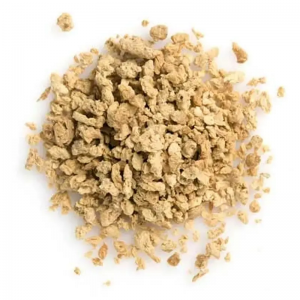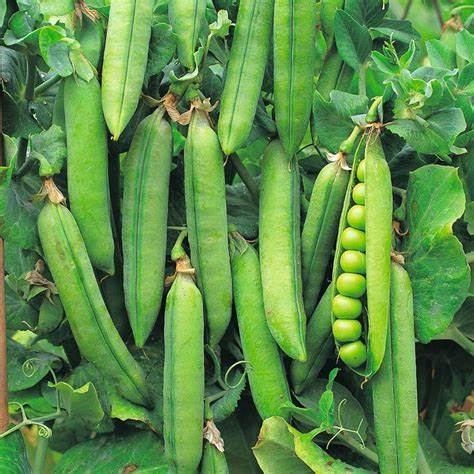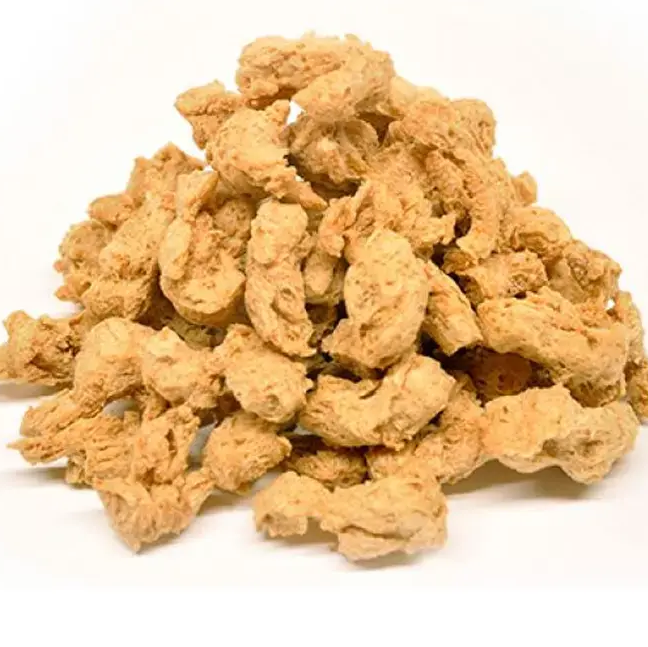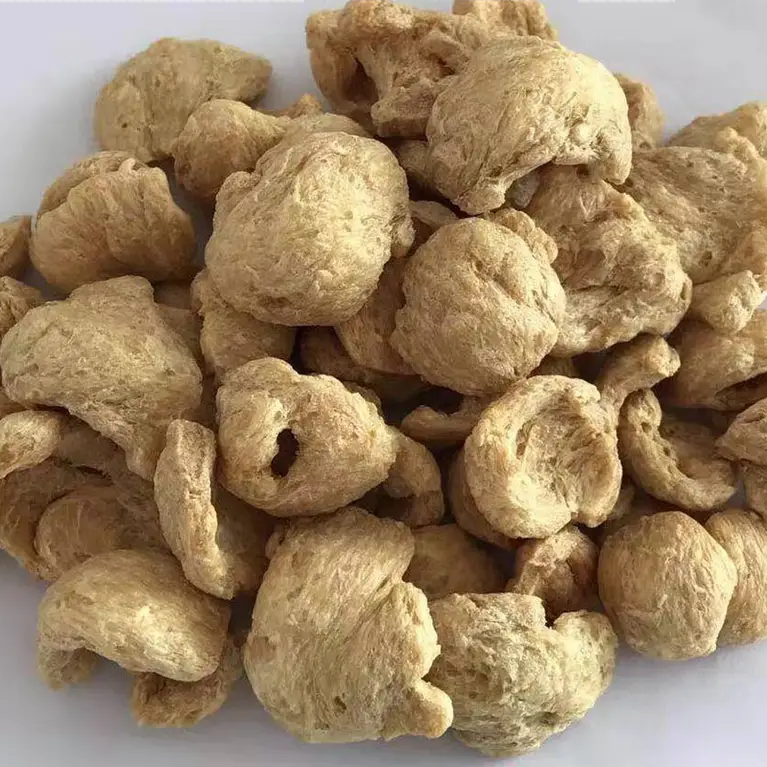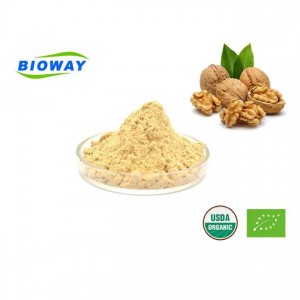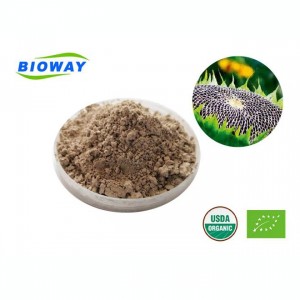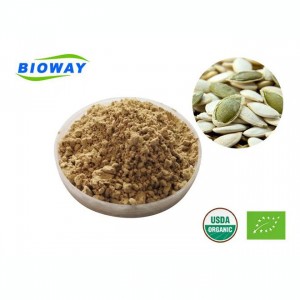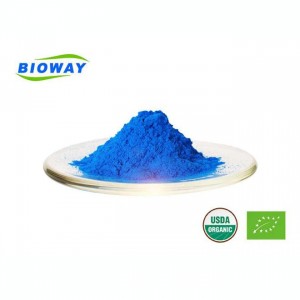Organic Textured Pea Protein
Organic Textured Pea Protein(TPP) is a plant-based protein derived from yellow peas that has been processed and textured to have a meat-like texture. It is produced using organic agricultural practices, which means that no synthetic chemicals or genetically modified organisms (GMOs) are used in its production. Pea protein is a popular alternative to traditional animal-based proteins as it is low in fat, cholesterol-free, and rich in amino acids. It is commonly used as an ingredient in plant-based meat alternatives, protein powders, and other food products to provide a sustainable and nutritious source of protein.
| No. | Test Item | Test Method |
Unit |
Specification |
| 1 | Sensory index | In house method | / | Irregularflake with irregular porous structures |
| 2 | Moisture | GB 5009.3-2016 (I) | % | ≤13 |
| 3 | Protein (dry basis) | GB 5009.5-2016 (I) | % | ≥80 |
| 4 | Ash | GB 5009.4-2016 (I) | % | ≤8.0 |
| 5 | Water Retention Capacity | In house method | % | ≥250 |
| 6 | Gluten | R-Biopharm 7001 |
mg/kg |
<20 |
| 7 | Soy | Neogen 8410 |
mg/kg |
<20 |
| 8 | Total Plate Count | GB 4789.2-2016 (I) |
CFU/g |
≤10000 |
| 9 | Yeast & Molds | GB 4789.15-2016 |
CFU/g |
≤50 |
| 10 | Coliforms | GB 4789.3-2016 (II) |
CFU/g |
≤30 |
Here are some key product features of organic textured pea protein:
Organic Certification: Organic TPP is produced using organic agricultural practices, meaning it is free from synthetic chemicals, pesticides, and GMOs.
Plant-based Protein: Pea protein is derived solely from yellow peas, making it a vegan and vegetarian-friendly protein option.
Meat-like Texture: TPP is processed and textured to mimic the texture and mouthfeel of meat, making it an ideal ingredient for plant-based meat substitutes.
High Protein Content: Organic TPP is known for its high protein content, typically providing around 80% protein per serving.
Balanced Amino Acid Profile: Pea protein contains all nine essential amino acids, making it a complete protein source that can support muscle growth and repair.
Low in Fat: Pea protein is naturally low in fat, making it a suitable option for those looking to reduce their fat intake while still meeting their protein requirements.
Cholesterol-free: Unlike animal-based proteins like meat or dairy, organic textured pea protein is cholesterol-free, promoting heart health.
Allergen-friendly: Pea protein is naturally free from common allergens such as dairy, soy, gluten, and eggs, making it suitable for individuals with specific dietary restrictions or allergies.
Sustainable: Peas are considered a sustainable crop due to their low environmental impact compared to animal agriculture. Choosing organic textured pea protein supports sustainable and ethical food choices.
Versatile Use: Organic TPP can be used in various applications, including plant-based meat alternatives, protein bars, shakes, smoothies, baked goods, and more.
It's important to note that specific product features may vary depending on the manufacturer and the specific brand.
Organic textured pea protein offers a range of health benefits due to its nutritional composition and organic production methods. Here are some of its key health benefits:
High Protein Content: Organic TPP is known for its high protein content. Protein is crucial for various physiological functions, including muscle repair and growth, immune system support, hormone production, and enzyme synthesis. Incorporating pea protein into a balanced diet can help meet daily protein requirements, especially for individuals following plant-based or vegetarian diets.
Complete Amino Acid Profile: Pea protein is considered a high-quality plant-based protein because it contains all nine essential amino acids that the body cannot produce on its own. These amino acids are necessary for building and repairing tissues, supporting neurotransmitter production, and regulating hormone levels.
Gluten-Free and Allergen-Friendly: Organic TPP is naturally gluten-free, making it suitable for individuals with gluten intolerance or celiac disease. Additionally, it is also free from common allergens such as soy, dairy, and eggs, making it a viable option for those with food allergies or sensitivities.
Digestive Health: Pea protein is easily digestible and well-tolerated by most individuals. It contains a good amount of dietary fiber, which promotes regular bowel movements, supports gut health, and helps maintain healthy blood sugar levels. The fiber also aids in promoting feelings of fullness and may contribute to weight management.
Low in Fat and Cholesterol: Organic TPP is typically low in fat and cholesterol, making it a suitable choice for those watching their fat and cholesterol intake. It can be a valuable protein source for individuals looking to support heart health and maintain optimal blood lipid levels.
Rich in Micronutrients: Pea protein is a good source of various micronutrients, such as iron, zinc, magnesium, and B vitamins. These nutrients play essential roles in energy production, immune function, cognitive health, and overall well-being.
Organic Production: Choosing organic TPP ensures that the product is produced without the use of synthetic pesticides, fertilizers, genetically modified organisms (GMOs), or other artificial additives. This helps minimize exposure to potentially harmful substances and promotes environmentally sustainable farming practices.
It is worth noting that while organic TPP offers several health benefits, it should be consumed as part of a well-balanced diet and in combination with other whole foods to ensure a diverse nutrient intake. Consulting with a healthcare professional or registered dietitian can provide personalized guidance on incorporating organic textured pea protein into a healthy eating plan.
Organic textured pea protein has a wide range of product application fields due to its nutritional profile, functional properties, and suitability for various dietary preferences. Here are some common product application fields for organic textured pea protein:
Food and Beverage Industry: Organic TPP can be used as a plant-based protein ingredient in a variety of food and beverage products, including:
Plant-based meat alternatives: They can be used to create meat-like textures and provide a source of plant-based protein in products such as veggie burgers, sausages, meatballs, and ground meat substitutes.
Dairy alternatives: Pea protein is often used in plant-based milk alternatives like almond milk, oat milk, and soy milk to increase their protein content and improve texture.
Bakery and snack products: They can be incorporated into baked goods like bread, cookies, and muffins, as well as snack bars, granola bars, and protein bars to enhance their nutritional profile and functional properties.
Breakfast cereals and granola: Organic TPP can be added to breakfast cereals, granola, and cereal bars to boost protein content and provide a plant-based protein source.
Smoothies and shakes: They can be used to fortify smoothies, protein shakes, and meal replacement drinks, providing a complete amino acid profile and promoting satiety.
Sports Nutrition: Organic TPP is a popular ingredient in sports nutrition products due to its high protein content, complete amino acid profile, and suitability for various dietary preferences:
Protein powders and supplements: It is commonly used as a protein source in protein powders, protein bars, and ready-to-drink protein shakes targeted towards athletes and fitness enthusiasts.
Pre- and post-workout supplements: Pea protein can be included in pre-workout and post-workout formulas to support muscle recovery, repair, and growth.
Health and Wellness Products: Organic TPP is often used in health and wellness products due to its beneficial nutritional profile. Some examples include:
Meal replacement products: It can be incorporated into meal replacement shakes, bars, or powders as a protein source to provide balanced nutrition in a convenient format.
Nutritional supplements: Pea protein can be used in various nutritional supplements, including capsules or tablets, to increase protein intake and support overall health.
Weight management products: Its high protein and fiber content make organic textured pea protein suitable for weight management products like meal replacements, snack bars, and shakes aimed at promoting satiety and supporting weight loss or maintenance.
These applications are not exhaustive, and the versatility of organic textured pea protein allows for its use in various other food and beverage formulations. Manufacturers can explore its functionality in different products and adjust the texture, taste, and nutritional composition accordingly to meet specific market demands.
The production process of organic textured pea protein typically involves the following steps:
Sourcing Organic Yellow Peas: The process begins with sourcing organic yellow peas, which are typically grown in organic farms. These peas are chosen for their high protein content and suitability for texturization.
Cleaning and Dehulling: The peas are thoroughly cleaned to remove any impurities or foreign materials. The outer hulls of the peas are also removed, leaving behind the protein-rich portion.
Milling and Grinding: The pea kernels are then milled and ground into a fine powder. This helps break down the peas into smaller particles for further processing.
Protein Extraction: The grounded pea powder is then mixed with water to form a slurry. The slurry is stirred and agitated to separate the protein from the other components, such as starch and fiber. This process can be performed using different methods, including mechanical separation, enzymatic hydrolysis, or wet fractionation.
Filtration and Drying: Once the protein is extracted, it is separated from the liquid phase using filtration methods such as centrifugation or filtration membranes. The resulting protein-rich liquid is then concentrated and spray-dried to remove excess moisture and obtain a powdered form.
Texturization: The pea protein powder is further processed to create a textured structure. This is done through various techniques such as extrusion, which involves forcing the protein through a specialized machine under high pressure and temperature. The extruded pea protein is then cut into desired shapes, resulting in a textured protein product that resembles the texture of meat.
Quality Control: Throughout the production process, rigorous quality control measures are implemented to ensure the product meets the required organic standards, protein content, taste, and texture. Independent third-party certification may be obtained to verify the organic certification and quality of the product.
Packaging and Distribution: After quality control checks, the organic textured pea protein is packaged in suitable containers, such as bags or bulk containers, and stored in a controlled environment. It is then distributed to retailers or food manufacturers for use in various food products.
It is important to note that the specific production process may vary depending on the manufacturer, equipment used, and desired product characteristics.
Storage: Keep in a cool, dry, and clean place, Protect from moisture and direct light.
Bulk Package: 25kg/drum.
Lead Time: 7 days after your order.
Shelf Life: 2 years.
Remark: Customized specifications also can be achieved.
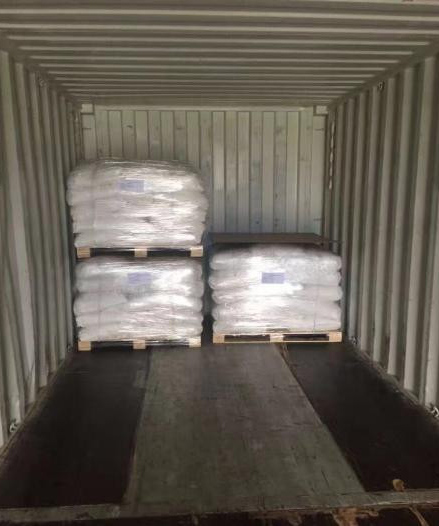
20kg/bag 500kg/pallet

Reinforced packaging

Logistics security
Express
Under 100kg, 3-5Days
Door to door service easy to pick up the goods
By Sea
Over300kg, Around 30 Days
Port to port service professional clearance broker needed
By Air
100kg-1000kg, 5-7Days
Airport to airport service professional clearance broker needed

Organic Textured Pea Protein is certified with the NOP and EU organic, ISO certificate, HALAL certificate, and KOSHER certificate.

Organic textured soy protein and organic textured pea protein are both plant-based protein sources commonly used in vegetarian and vegan diets. However, there are some differences between them:
Source: Organic textured soy protein is derived from soybeans, while organic textured pea protein is obtained from peas. This difference in source means they have different amino acid profiles and nutritional compositions.
Allergenicity: Soy is one of the most common food allergens, and some individuals may have allergies or sensitivities to it. On the other hand, peas are generally considered to have a low allergenic potential, making pea protein a suitable alternative for those with soy allergies or sensitivities.
Protein Content: Both organic textured soy protein and organic textured pea protein are rich in protein. However, soy protein typically has a higher protein content than pea protein. Soy protein can contain around 50-70% protein, while pea protein generally contains around 70-80% protein.
Amino Acid Profile: While both proteins are considered complete proteins and contain all essential amino acids, their amino acid profiles differ. Soy protein is higher in certain essential amino acids like leucine, isoleucine, and valine, while pea protein is particularly high in lysine. The amino acid profile of these proteins may affect their functionality and suitability for different applications.
Taste and Texture: Organic textured soy protein and organic textured pea protein have distinct taste and texture properties. Soy protein has a more neutral flavor and a fibrous, meat-like texture when rehydrated, making it suitable for various meat substitutes. Pea protein, on the other hand, can have a slightly earthy or vegetal taste and a softer texture, which may be more suited to certain applications like protein powders or baked goods.
Digestibility: Digestibility can vary between individuals; however, some studies suggest that pea protein may be more easily digestible than soy protein for certain people. Pea protein has a lower potential for causing digestive discomfort, such as gas or bloating, compared to soy protein.
Ultimately, the choice between organic textured soy protein and organic textured pea protein depends on factors such as taste preference, allergenicity, amino acid requirements, and intended application in various recipes or products.









